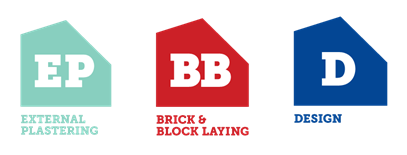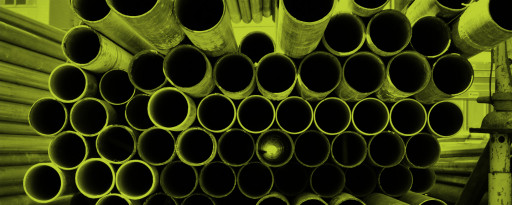LBP competencies amended
Codewords 76: January 2017
Developments in construction industry practices mean that licence class competencies need to be updated and clarified from time to time to remain relevant. It’s important to keep licence class competencies up to date to make sure LBP skills and knowledge are relevant and current.

Consultation process
In 2014 and again in early 2016, MBIE consulted publicly on the proposed changes to the structure and substance of the LBP licence class competencies and received quality feedback from LBPs and industry groups.
Amendments to the LBP rules
The amendments are generally technical in nature. They update and clarify competencies to reflect current practice and improve competency structure. Some of the main changes are summarised below. The most significant changes affect the external plastering competencies.
External plastering
- Proposed insertion of a new area of practice for stucco will be removed as it is too specific. The changes are intended to create broader competencies that are inclusive rather than specific to allow for future changes.
- Performance indicators for the installation of substrates in the external plastering competencies are included. This means the installation of a cladding substrate is now considered restricted building work and must be completed by an LBP carpenter or external plasterer only. It was also recognised that competent solid plasterers commonly apply ‘sand-and-cement plaster’ over a wide range of surfaces, regardless of the substrate. This trend is being reflected in national qualifications offered by training providers.
- Generic terminology – ‘installation of the substrate’ – in the proprietary plaster cladding system (PPCS) external plastering competencies is included. This will close a loophole in the current competencies where installation of some substrates (eg aerated concrete panel) is not considered restricted building work. This change means an LBP carpenter or an external plasterer must install or supervise the installation of substrate.
- Since the LBP scheme’s inception the PPCS competencies were limited to installing and plastering over two specific substrates – lightweight fibre cement-based sheet or an exterior insulating finishing system (EIFS). PPCS will now encompass a broader range of substrates that an LBP must install or supervise.
- A new competency ‘Work Safely’ will be added to external plastering to bring together a range of safety performance indicators into one place. The Health and Safety at Work Act is now cited in place of the Health and Safety in Employment Act.
- There are also more explicit requirements for following a building consent where one has been issued.
- These changes were confirmed on 10 November 2016 and will take effect on 23 March 2017.
Bricklaying and blocklaying
- A proposed change updates the list of technical information an LBP should be competent in understanding and applying. This reflects changes in Acceptable Solutions and Standards.
- A new competency ‘Work Safely’ will be added to bring together a range of safety performance indicators. The Health and Safety at Work Act is now cited in place of the Health and Safety in Employment Act.
- Reference to E2/AS3 (the code of practice for weathertight concrete and concrete masonry construction) has been included. Some references to NZS:3604 have been removed, given section 11 has largely been moved into E2/AS1 and out of the Standard.
- Minor changes have been made to the performance indicator description to better reflect the type of work practitioners undertake. They now read ‘structural masonry or veneer’ and not ‘bricks or blocks’.
- There are also more explicit requirements for following a building consent where one has been issued.
- These changes took effect on 10 November 2016.
Design
- A new competency ‘Manage construction phase design’ will bring together some performance indicators from other competencies to improve the definition and structure of competencies.
- There are changes to the competencies relating to the client/designer working relationship. These are about establishing agreed terms of engagement, timeframes and associated costs with the design process.
- Duplication of performance indicators has been removed from the competencies to make them clearer.
- These changes took effect on 10 November 2016.
What will these changes mean for practitioners?
PPCS
The changes to the PPCS external plastering competencies may affect some installers of aerated concrete panel products and other related cladding systems. This work will become restricted building work and businesses or practitioners may need to upskill their staff to become LBPs or engage LBPs to carry out or supervise the work.
Transition period for PPCS: The rule changes for external plastering include a transition period of four months – they come into force on 23 March 2017 to allow affected groups to prepare for this change.
Other changes
The other changes are largely technical and should have a limited effect on current or prospective LBPs as most are about better aligning the competencies with current work practices and recent regulatory change.
You can read more about the scheme, including the LBP rules that outline the current competencies, on the LBP website.
Quiz
1. Where is E2/AS3 now referenced?
- In section 7 of the Building Act.
- In the bricklaying and blocklaying competencies.
- In the 2017 NZ Builders Omnibus.
- NZS:3604.
2. Which licence class has been broadened to encompass a wider range of cladding substrates?
- External plastering proprietary plaster cladding system (PPCS).
- Design.
- Bricklaying and blocklaying.
- Roofing.
3. Which of the three licence classes discussed above includes new measures for establishing agreed terms of engagement, timeframes and associated costs with the design process?
- None.
- Bricklaying and blocklaying.
- External plastering.
- Design.
Check answers
1. Where is E2/AS3 now referenced?
b. In the bricklaying and blocklaying competencies.
2. Which licence class has been broadened to encompass a wider range of cladding substrates?
a. External plastering proprietary plaster cladding system (PPCS).
3. Which of the three licence classes includes new measures for establishing agreed terms of engagement, timeframes and associated costs with the design process?
d. Design.
